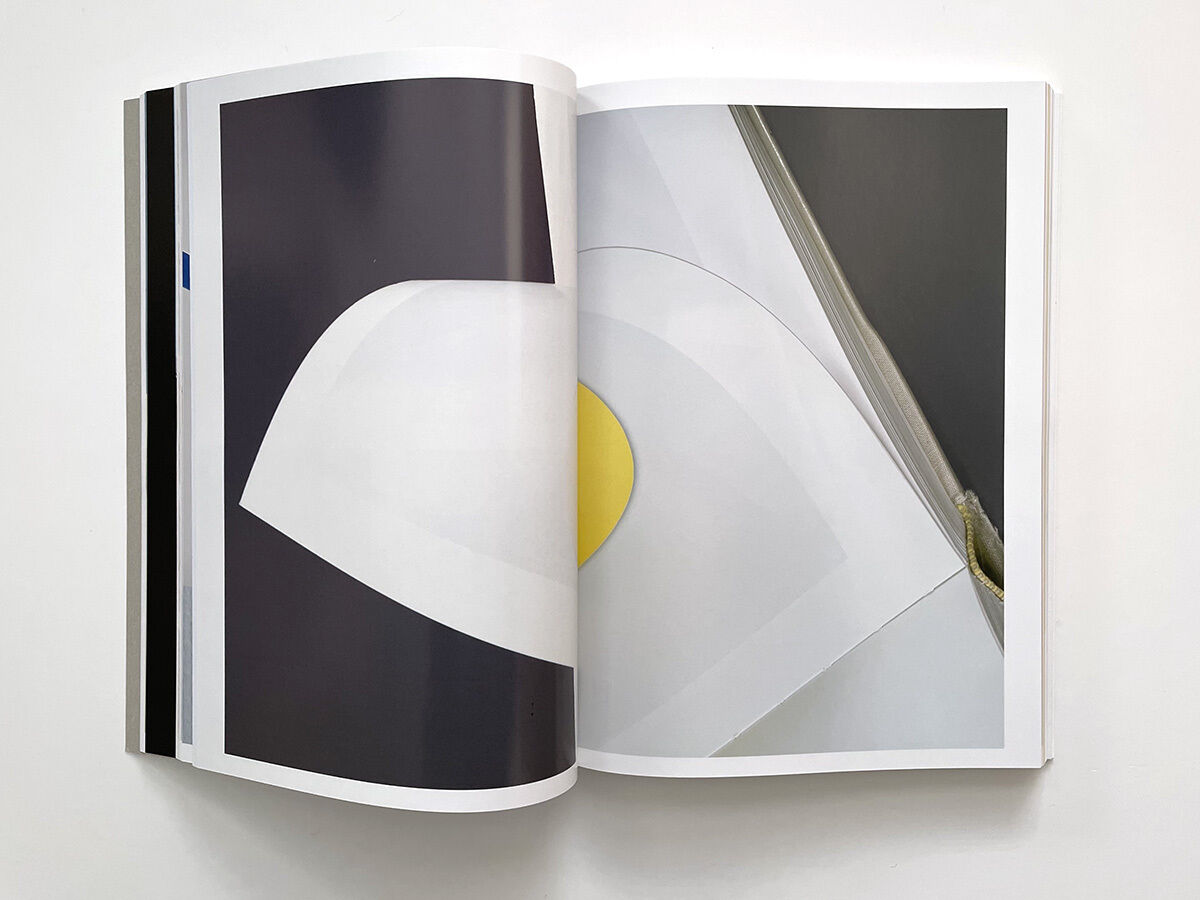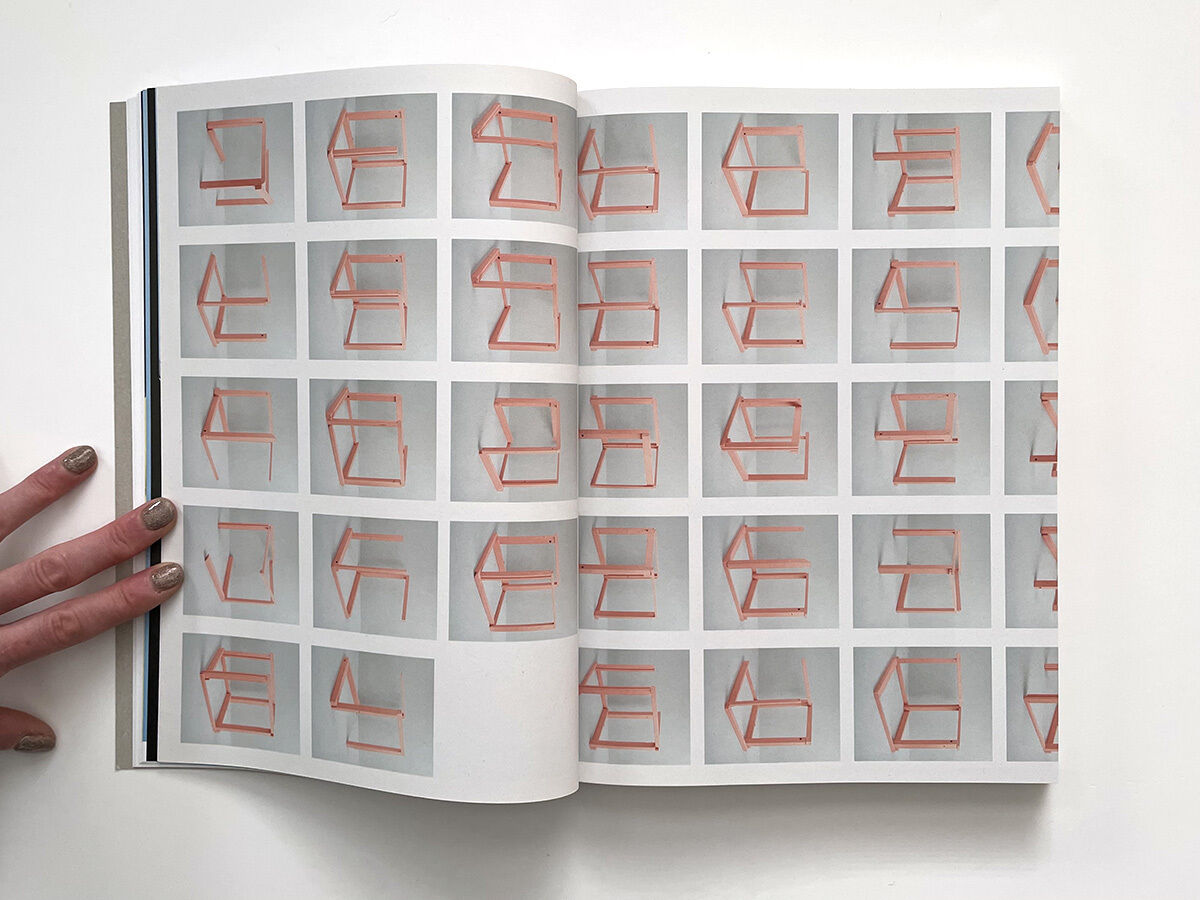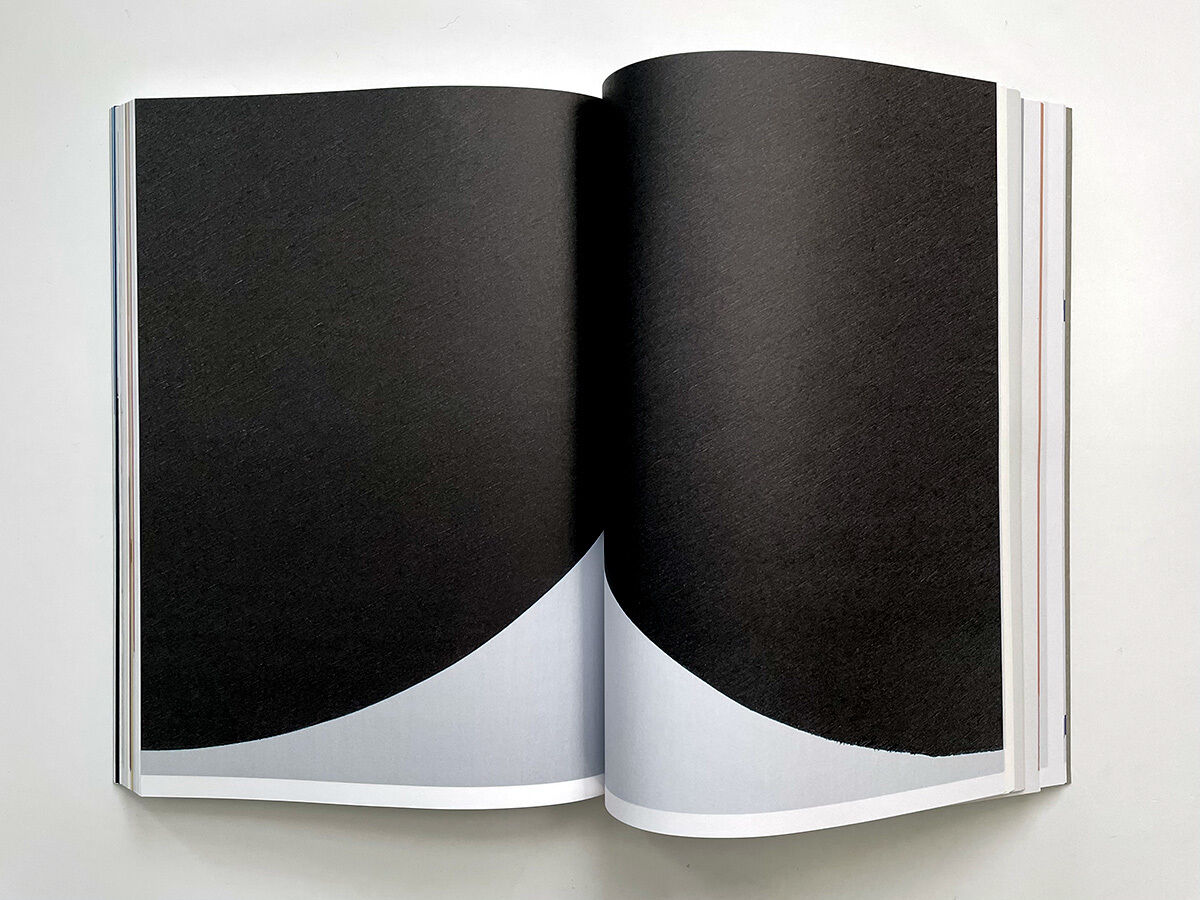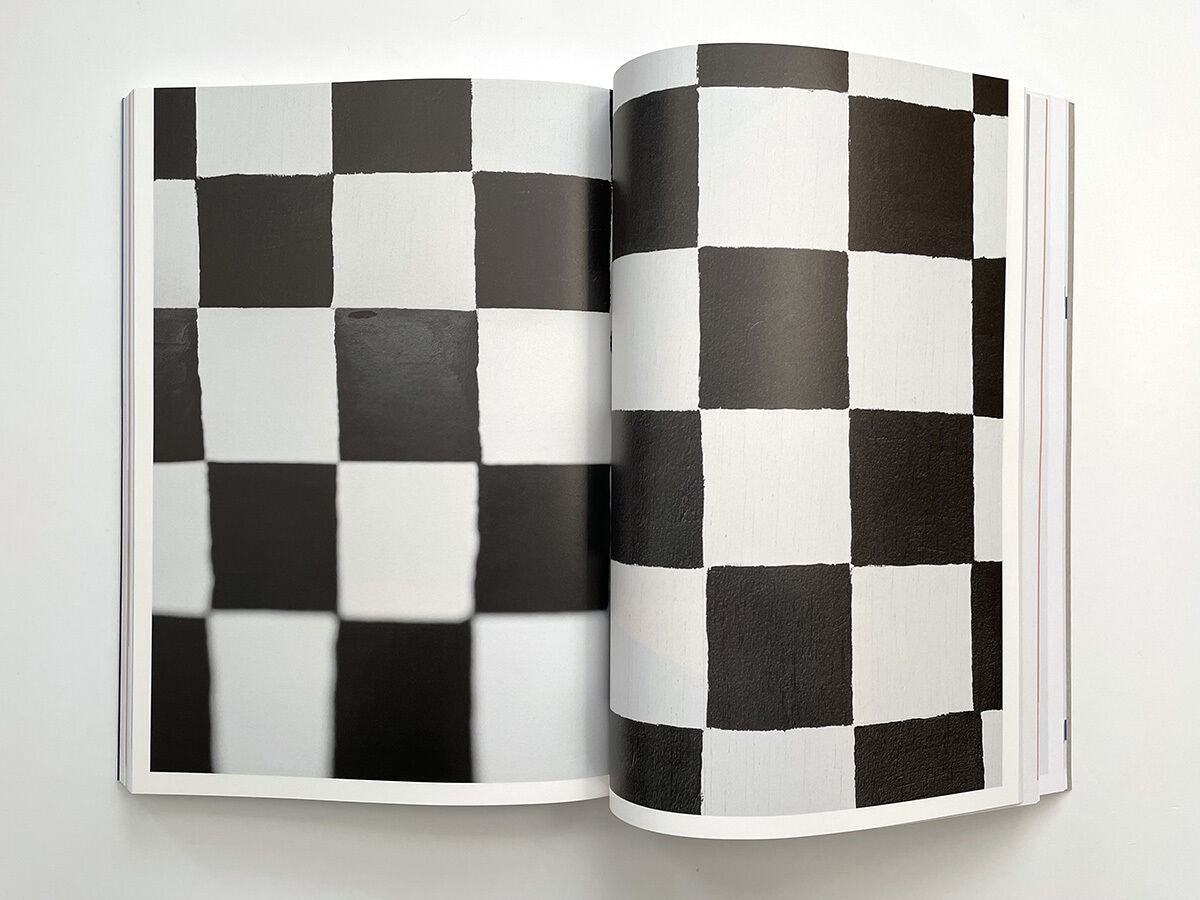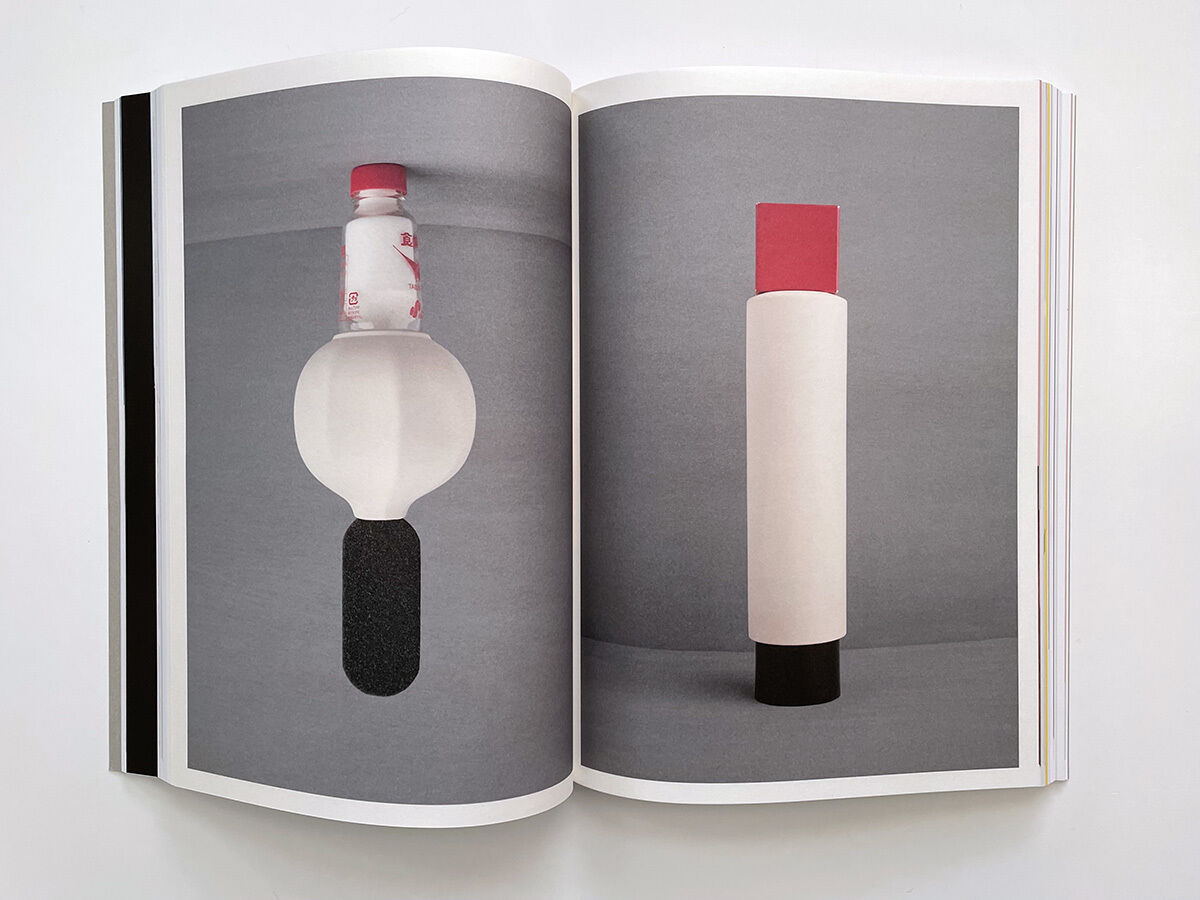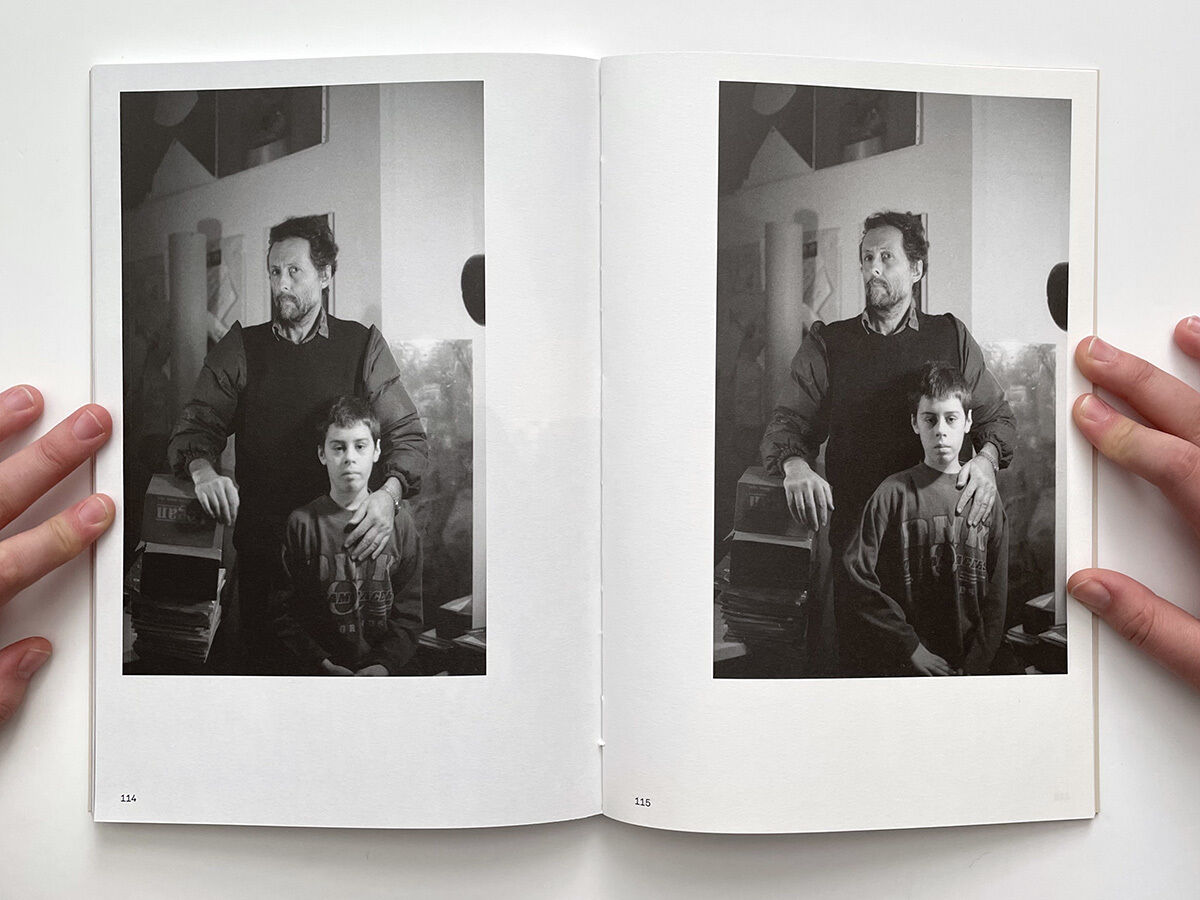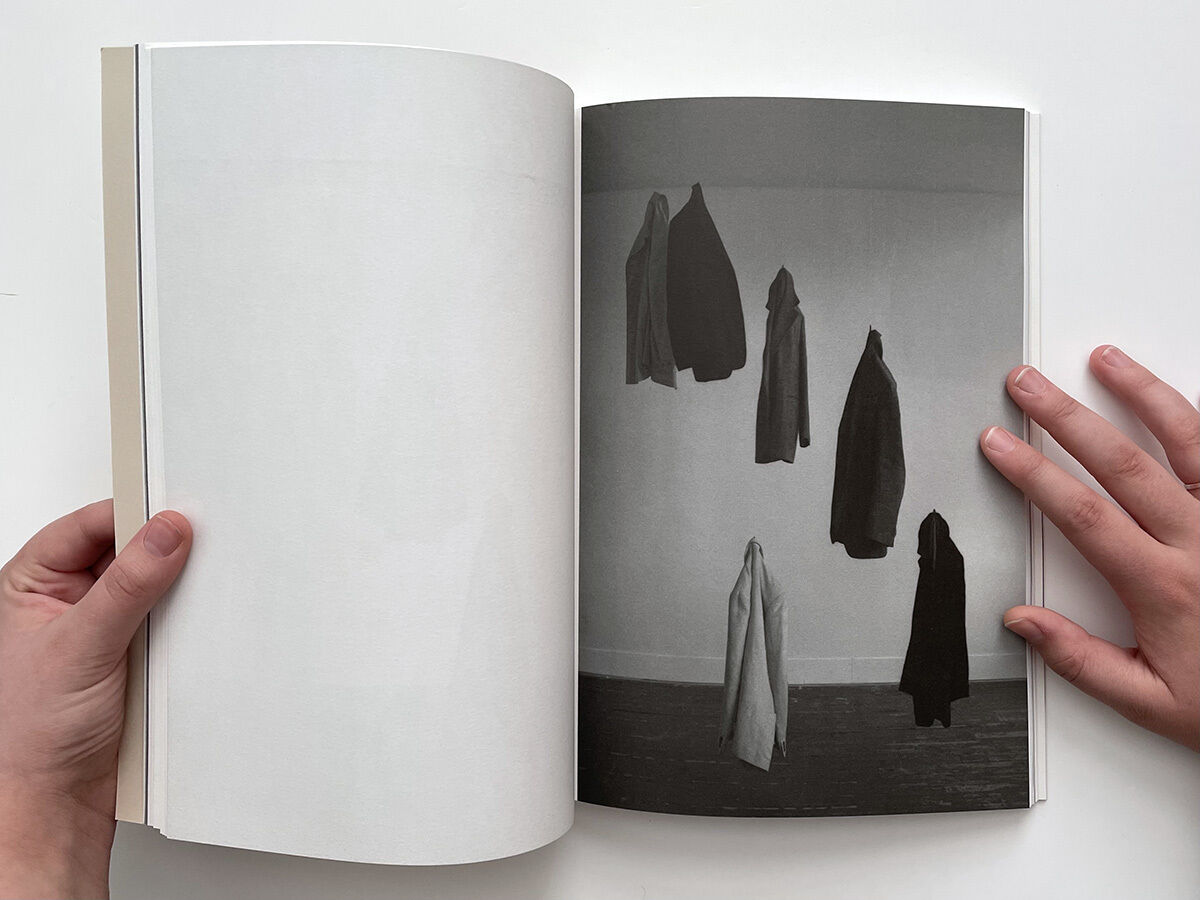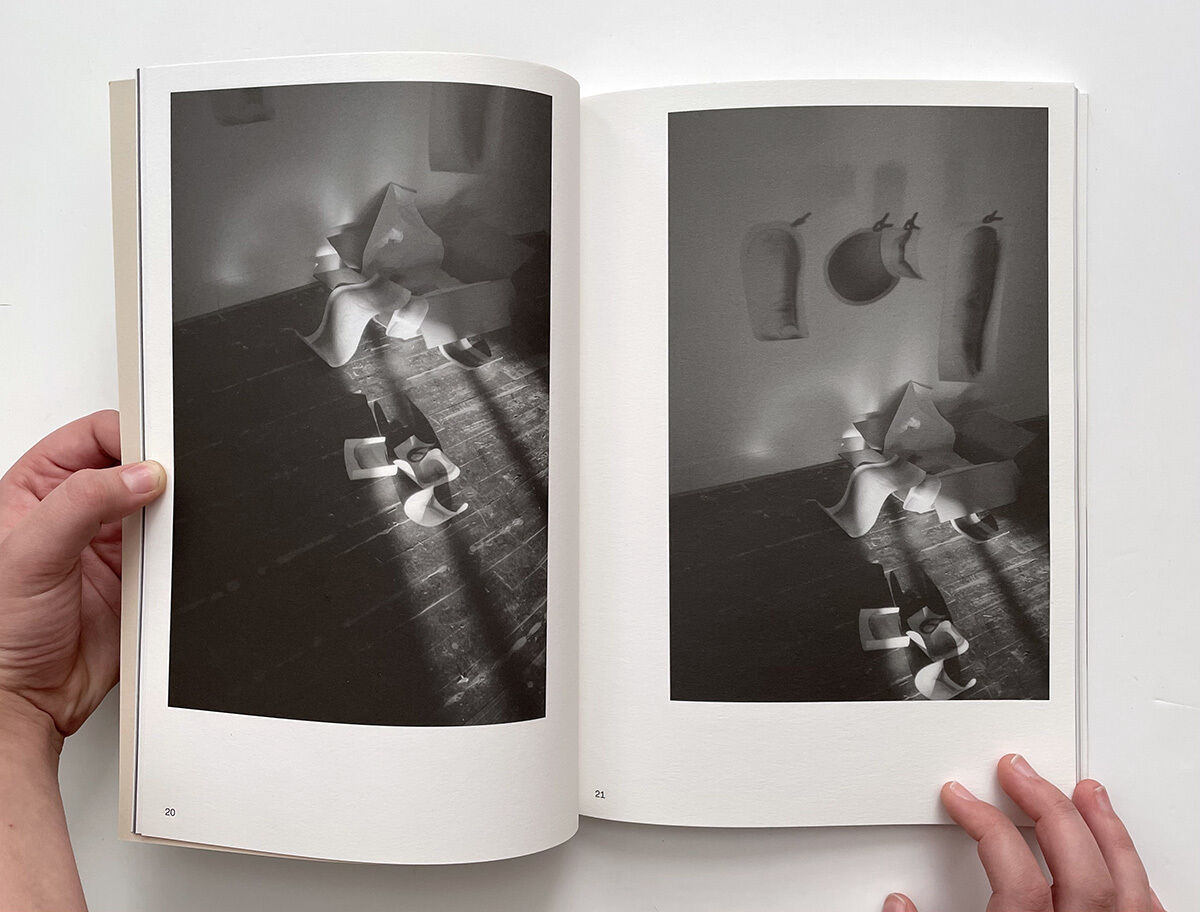
Jeux de Mains, by Cécile Poimbœuf-Koizumi & Stephen Ellcock, published by Chose Commune, 2021; L: Félix Nadar, La main du banquier D. (the hand of banker D.), Chirographic study printed in one hour with electric lighting, 1861, et collodion glass negative, p. 80; R: artist unknown, Teapot in the shape of Buddha's-hand citron, Qing Dynasty, China, 1644-1911, stoneware with coloured glazes, p. 81
On Gazing with the Hands: Photobooks, Images and Touch
All images by the author of this article
Eugenie Shinkle
20 dec. 2022 • 10 min
The relationship between vision and touch is more than evocative or metaphoric. The two are sensorially coupled, as intertwined and necessary to one another as smell is to taste – without the one, the other suffers. Touch adds an unquantifiable supplement to vision and to understanding; the French philosopher Maine de Biran wrote of touch that it ‘opens a feeding ground for intellect and furnishes it with its more substantial nourishment’.Maine de Biran, The Influence of Habit on the Faculty of Thinking, trans. Margaret Donaldson Boehm (Baltimore: Williams and Wilkins, 1929), 61. We might even say that all experience is married to tactile sensation – that sensation is neither secondary nor supplementary to experience, but allied with it, a necessary and vital part of the way that we make sense of the world.
Photobooks bring this relationship to life in printed form. Unlike the photographs that they contain – many of which can also be consumed electronically as dematerialised images – photobooks demand physical engagement. A book is a volume in space, a thing that must be handled in order to be experienced. It’s surprising how few photobooks – or those who write about them – pay close attention to this. On my desk are three books that play deliberately, each in their own way, with the relationship between sight and touch.
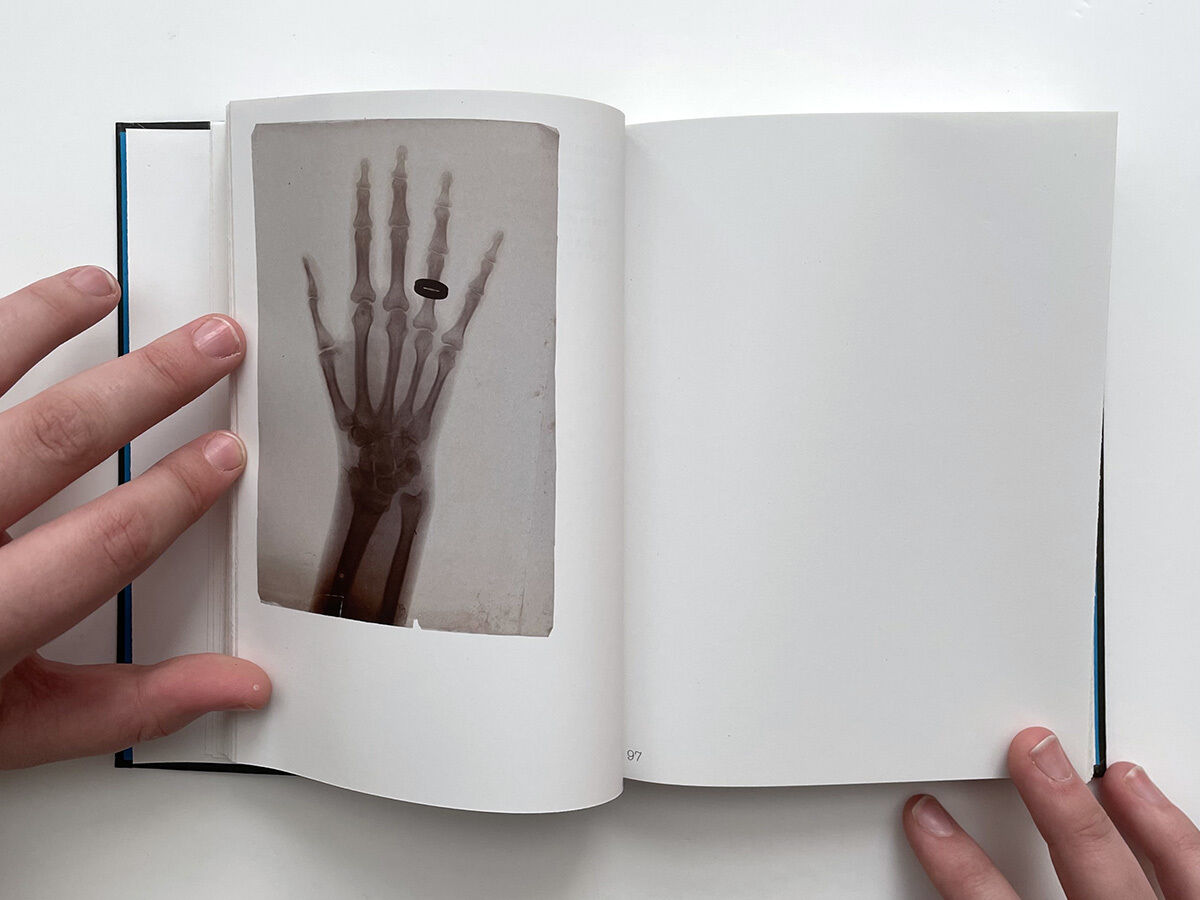
Jeux de Mains, by Cécile Poimbœuf-Koizumi & Stephen Ellcock, published by Chose Commune, 2021; photographer unknown, The bones of the hand of Mrs F. Bridgeman, wearing a finger ring, showing a broken wrist, 1911, photograph of X-ray, p. 96
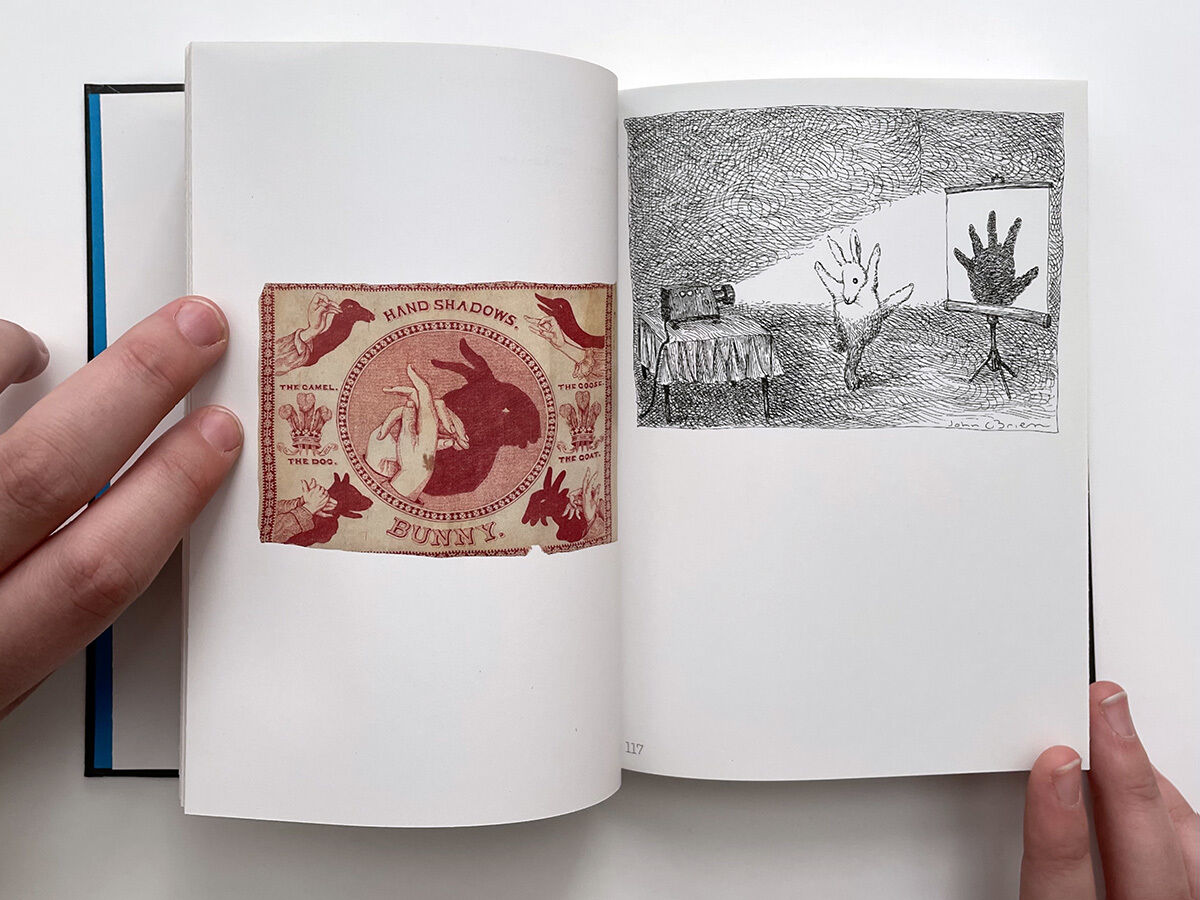
Jeux de Mains, by Cécile Poimbœuf-Koizumi & Stephen Ellcock, published by Chose Commune, 2021; L: artist unknown, Panel (England), mid c19th, cotton, p. 116; R: John O'Brien, Rabbit hand puppet, 1991, pen and ink on bristol paper, p. 117
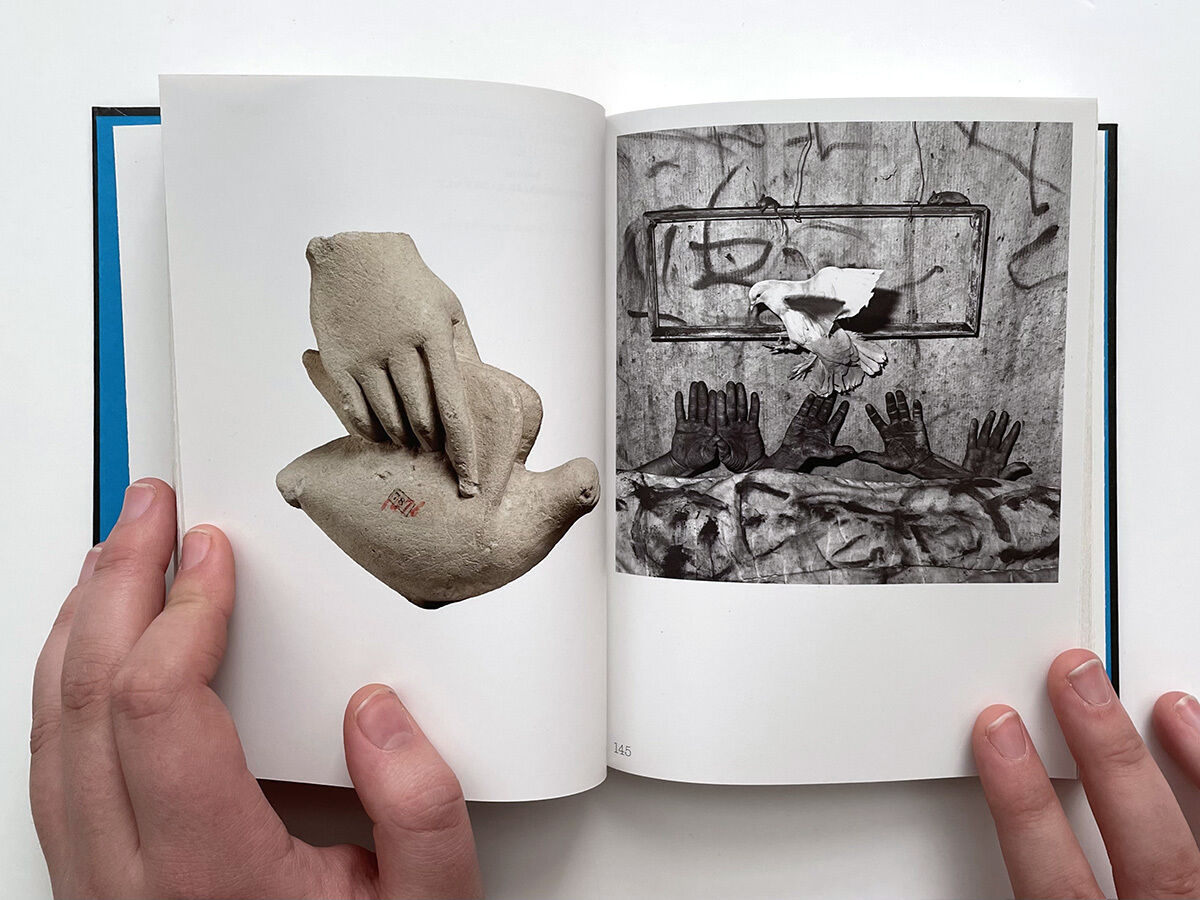
Jeux de Mains, by Cécile Poimbœuf-Koizumi & Stephen Ellcock, published by Chose Commune, 2021; L: artist unknown, Limestone hand holding a dove, sanctuary of Golgoi-Ayios Photios, Cyprus, p. 144; R: Roger Ballen, Five Hands, 2006, archival pigment print, p. 145

Jeux de Mains, by Cécile Poimbœuf-Koizumi & Stephen Ellcock, published by Chose Commune, 2021; L: artist unknown, Miniature corbel in the shape of a hand, Mesopotamia, Nimrud (ancient Kahlu), c.883-859 BCE, ceramic and bitumen, p. 72; R: Anni Leppälä, Hand (reclining), 2017, pigment print with carving on the print, p. 73
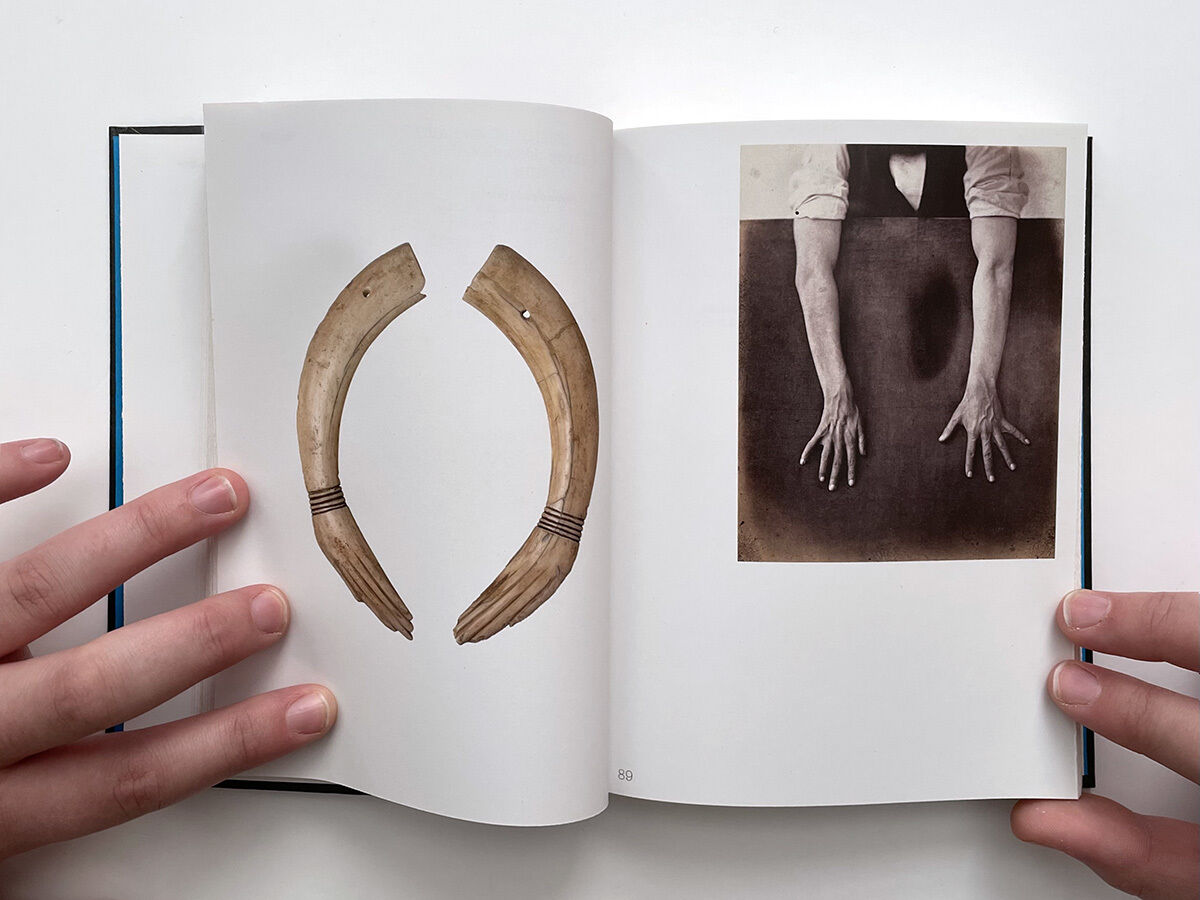
Jeux de Mains, by Cécile Poimbœuf-Koizumi & Stephen Ellcock, published by Chose Commune, 2021; L: artist unknown, Pair of clappers, Egypt, Middle Egypt, Amarna (Akhetaten), King's house at Amarna, pit south of the pond, Egypt Exploration Society excavations, 1931-2, c.1353-36 BCE, hippopotamus ivory, p. 88; R: L. Haase after H.W. Berend, A man whose arms and hands are exposed against a black background, fingers stretched, revealing less mobility in right hand, 1859, Albumen photoprint, p. 89
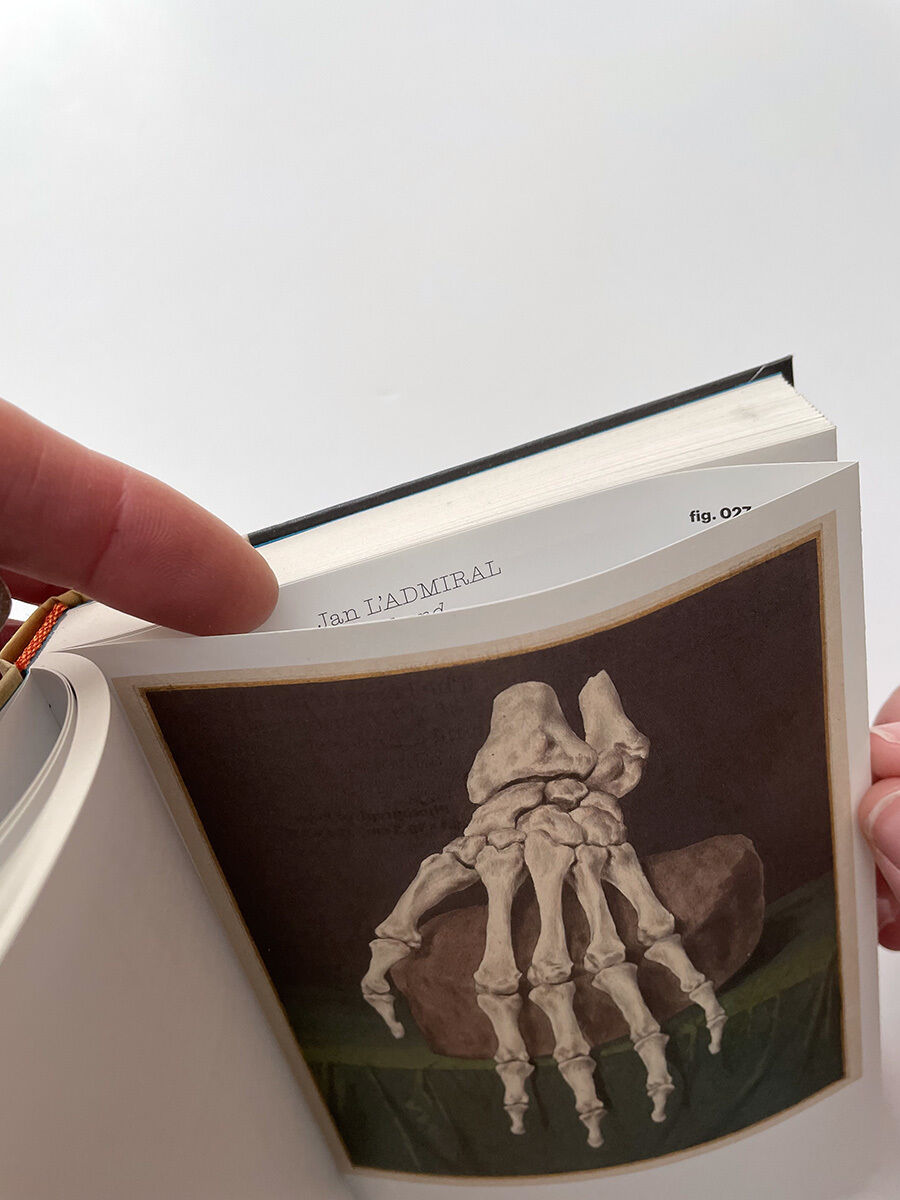
Jeux de Mains, by Cécile Poimbœuf-Koizumi & Stephen Ellcock, published by Chose Commune, 2021; Jan L'Admiral, Skelet van een hand (Skeleton of a hand), c18th, gouache on paper, p. 93
Compiled by Chose Commune’s editor Cécile Poimboeuf-Koizumi and London-based image collector Stephen Ellcock, Jeux de Mains (Chose Commune, 2021) contains 107 images of artworks featuring hands. The images in Jeux de Mains are sequenced intuitively – there’s no visual narrative to follow, no definitive arc or ‘journey’. Each image sits in its own little pocket of space, sometimes in quiet dialogue with an image on the facing page, sometimes alone. Hands are not only extraordinarily eloquent signifiers – they are agents of empathy too, even the most subtle gesture richly evocative of form, of feeling, of meaning. Observing touch is almost as intense as being touched. The images in Jeux de Mains offer an immediate haptic connection – an invitation not simply to look, but to feel all these hands grasping, gesturing, speaking.
But the subject matter of the images is only one way that this book engages with touch. Jeux de Mains is a French-folded book – that is, each page is doubled over and folded on the leading edge. Usually, French-folded pages are printed on the outside only, but sometimes – as is the case here – there’s information on the inside of the folded page as well. In order to read the image captions in Jeux de Mains, you need to carefully pull the two leaves apart and peer inside.
This simple design choice has a profound effect on the way that the book is experienced. The volume itself is physically small, and separating the leaves to look between them is not straightforward. It requires a specific operation – I had to insert a careful fingertip between the folds, then press gently to bow the pages apart. Once opened, the book needs to be held at an eccentric angle in order to read the text; occasionally, the reader also needs to work out which image a caption refers to, because it’s not always obvious. This routine feels frustratingly slow, especially for those of us accustomed to scrolling through images at speed. But each extra moment spent in the grip of Jeux de Mains embeds its content more firmly in the mind, in the same way that writing down an idea with a pencil or pen inscribes it in consciousness as a combination of sign and gesture.
Of course, the French fold isn’t really meant to be handled in this way – prying open the folded leaves invites damage. For those who prefer to keep their books in pristine condition, every page turn will be a tense operation. Before books were made on an industrial scale, binding and trimming were done by hand, and it was common for readers to encounter uncut pages. Sometimes, this was done on purpose, leaving the reader to enjoy the ritual of slicing through the folds. Today, the fold is more likely to be a considered an element of a book’s design, and tampering with it, a kind of vandalism. No matter how you choose to interact with it, Jeux de Mains is a reminder that experiencing a book is more than a matter of consuming images. It is an exercise of motor will – a combination of gestures with aim and purpose.
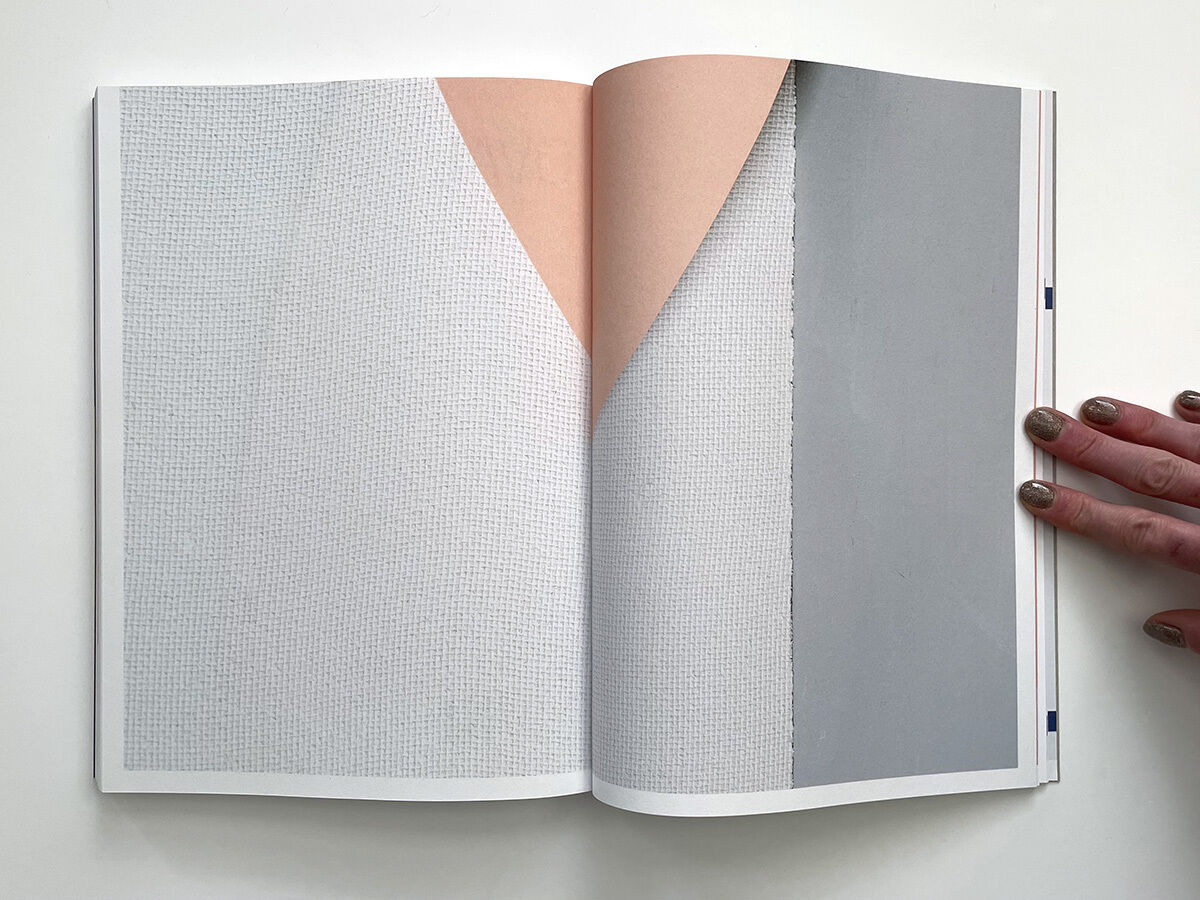

The Fold, by Fleur van Dodewaard, published by Free Pony Press, 2022
The fold is also the opening gesture in nearly all bookbinding. Those who make books know paper as a medium of the hand – its strength, its texture, the way it holds an image. For the maker of books, folding – along with cutting and binding – is one of the key principles governing the book form. The Fold (Free Pony Press, 2022) contains ten years of work by artist Fleur van Dodewaard, but it’s more than just a catalogue. Van Dodewaard’s practice incorporates painting, sculpture and photography. Her pieces – all of them temporary – are made from humble materials like wood, clay, paper, tape and paint, with the photograph as the final stage. The Fold is a kind of meta-object that takes these photographs as its subject matter and uses the principles of bookbinding to transform them into a new artwork. Here, the book itself is not simply a codex or a container for images, but an art object in its own right, each section treating the relationship between eye and hand in a slightly different way.
There are thirty-two different works represented in The Fold, set out in nineteen separate sections, each one printed on a different paper stock, each inviting a different kind of touch. The mirrored surfaces of Sun Set Series sit on thick glossy paper; Reclining Nude is printed on a stock so thin and velvety that the image on one side of the page shows through as part of the composition on the next. The sensation and pressure of fingers on the page shifts constantly in combination with the experience offered to the eyes. Sometimes, this experience is almost purely visual, the page presenting an edge-to-edge field of undifferentiated colour. Elsewhere, the viewer is invited to parse visual and spatial/haptic effects in more complex and nuanced ways, the physical form of the book acting as part of the image, and vice-versa. In Black Nude, the only sense of dimension on the page is provided by the shadow in the book’s gutter, while L’Origine du Monde uses raking light and extreme close-up to recast the paper’s texture as an image – a signifier of three dimensionality. Often (as in Oval and 131 variations), the original images are remade into new compositions by the physical format of the book, the gutter cutting into the image to create new variants presented across double-page spreads.
The borders of each page pose the distinction between image and object in a different way. Varying widely from one spread to the next – sometimes insistently present, sometimes completely absent – the borders are simultaneously part of the composition of the image on the page, and a reminder of the physical boundaries of the book. Rather than acting as a neutral frame for the image, borders in The Fold participate actively in defining (and redefining) the book as a volume in space. Full-bleed spreads, for instance, evoke a kind of confrontation between the picture and the substrate on which it’s been reproduced – the paper seeming to surge up from beneath the image and impose its structure.
In order to experience the photographs in The Fold ‘correctly’ – that is, in the orientation in which they were shot – the entire book must be turned around several times as you move through it. Some of the images in Biscuits, for instance, are obviously upside down. What could be dismissed as a whimsical design detail is another way of drawing attention to the reader’s agency in resolving the relationship between photographed objects, the images that represent them, and the volume that contains them. Orientation, in other words, is posed not as a question of objectively accurate representation (right side up or upside down), but as a matter of choice – how the reader decides to encounter the image on the page.
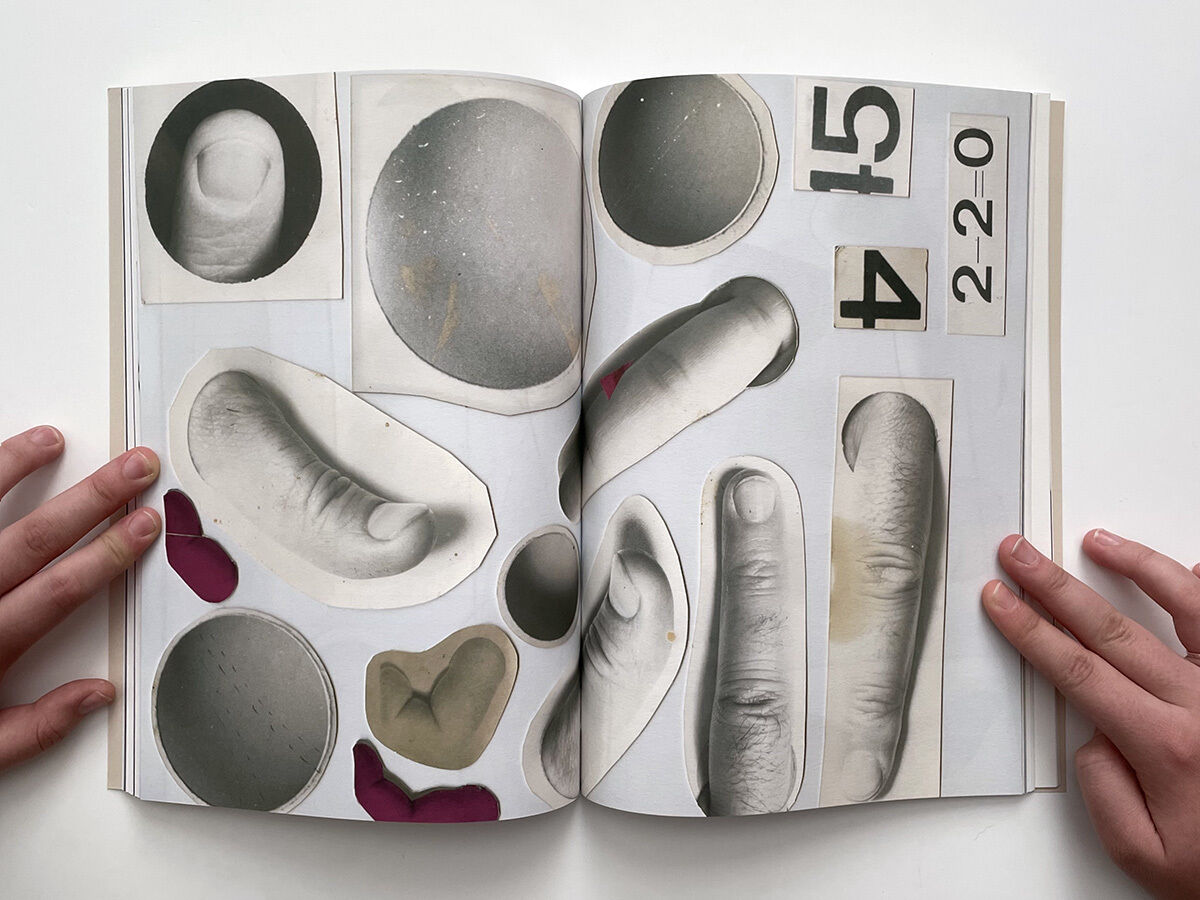

How to Raise a Hand, by Angelo Vignali, published by Witty Books, 2022
Touch is a physical encounter wedded to memory and emotion. Angelo Vignali’s How to Raise a Hand (Witty Books, 2022) was inspired by the discovery of a box containing hundreds of cut-out photographs of his late father’s fingers. The book – shaped, as we’re told in the introductory essay, by the process of mourning – is divided into chapters. First, we witness the slow, performative unpacking of the box of photographs, the images laid out on a wooden floor and hung from thin cords stretched across the frame, the paper curling in strong, raking light. A collection of overcoats is suspended from the ceiling, evoking – in the way that only empty clothing can – the absent body that once animated them. The encounter with these keepsakes is slow and deliberate, Vignali’s camera roaming slowly through the flock of overcoats and the heap of fingers.
Black and white of images of casts of Vignali’s own fingers and hands, disturbingly lifelike, suggest that his concern is not with memory as an image but as a form of sensation, unlocked from objects by handling them. Touch, here, is charged with emotion – a kind of reaching or striving, an attempt to connect with an absent body, each encounter invested with a meaning that neither Vignali, nor the reader, can ever fully grasp. We observe the hands being cast, and the casts themselves, photographed from different angles, scrutinised in the same way that a connoisseur might examine a sculpture – the texture of its surface and the way that it absorbs or reflects the light. In some images, the artist’s own hand curls tenderly around the casts of his own fingers.
In the centre of the book are reproduced some of the original finger images that inspired the work. Page after page of them, slightly larger than life, their size is measured in relation to the reader’s own fingers and thumbs resting on the page. Emerging from circular holes cut in white card and isolated from the rest of the hand, they resemble incomplete gestures – or, even more unsettlingly, disembodied larval things, amputated limbs, limp penises, or misshapen roots. In the same way, many of the images of waxen hands induce a kind of shudder, the fingertips frayed and the fingers themselves, softened by heat or handling, bent over at strange angles.
There is no specific language of grief in How to Raise a Hand; instead, that sensation is experienced by the reader as a kind of troubling absence, the fullness of the artist’s own anguish impossible to narrate, but alive on the page in a different form. The chaptered structure – and the narrative it suggests – reveals itself, eventually, to be a formality that the book knowingly works against. Like memory itself, the actual experience of the book is halting and fragmentary, circling back and forth between past and present.
These days, images flow past us in vast numbers and at increasing speeds, our experience of them ostensibly shared, but materially impoverished. The sensory qualities of the book take on a new significance here. Works such as these slow down and transform the experience of looking, the viewer encouraged not to ‘read’ – at least not in the conventional sense of the term – but to linger, to feel, to ponder the relationship between pictures and the volume that contains them, to experience touch as a creative force and an active agent in remembering. In asking this of the reader, they foreground the kind of deep sensory pleasure that characterises all of our lived experience. Touching books is an intimate, animate activity that evokes the vitality of our own lived bodies – a tactile encounter that is also a social one, born out of our bonds with the world around us.
